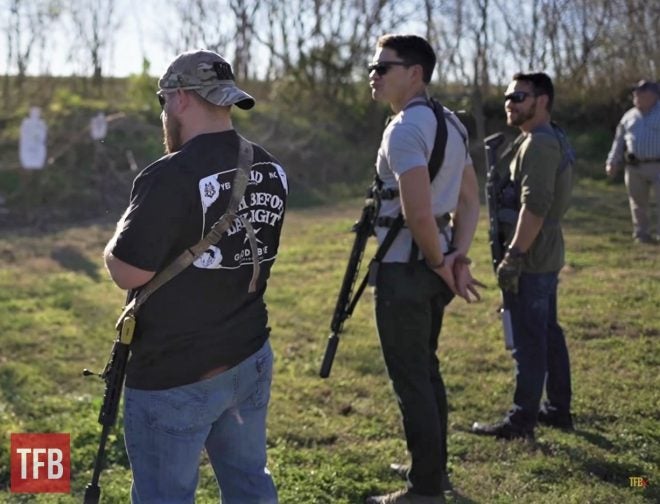For many shooters, the simple rifle sling tends to be an oft-forgotten or somewhat ignored piece of kit. Although we typically have and use them, they don’t get paid nearly as much attention as flashier or pricier gear. Plenty of Gunternet dwellers can’t wait to Instagram fancy new optics, suppressors, plate carriers, night vision equipment, and the like, but the humble sling? Meh. Just slap a piece of fabric on the gun, casually drape it over your shoulder, and move on, right? Wrong. A well-designed, well-made, and properly set up sling can offer much greater benefit and functionality than first meets the eye. Would you be surprised if I told you it can actually improve your shooting? Many would be.
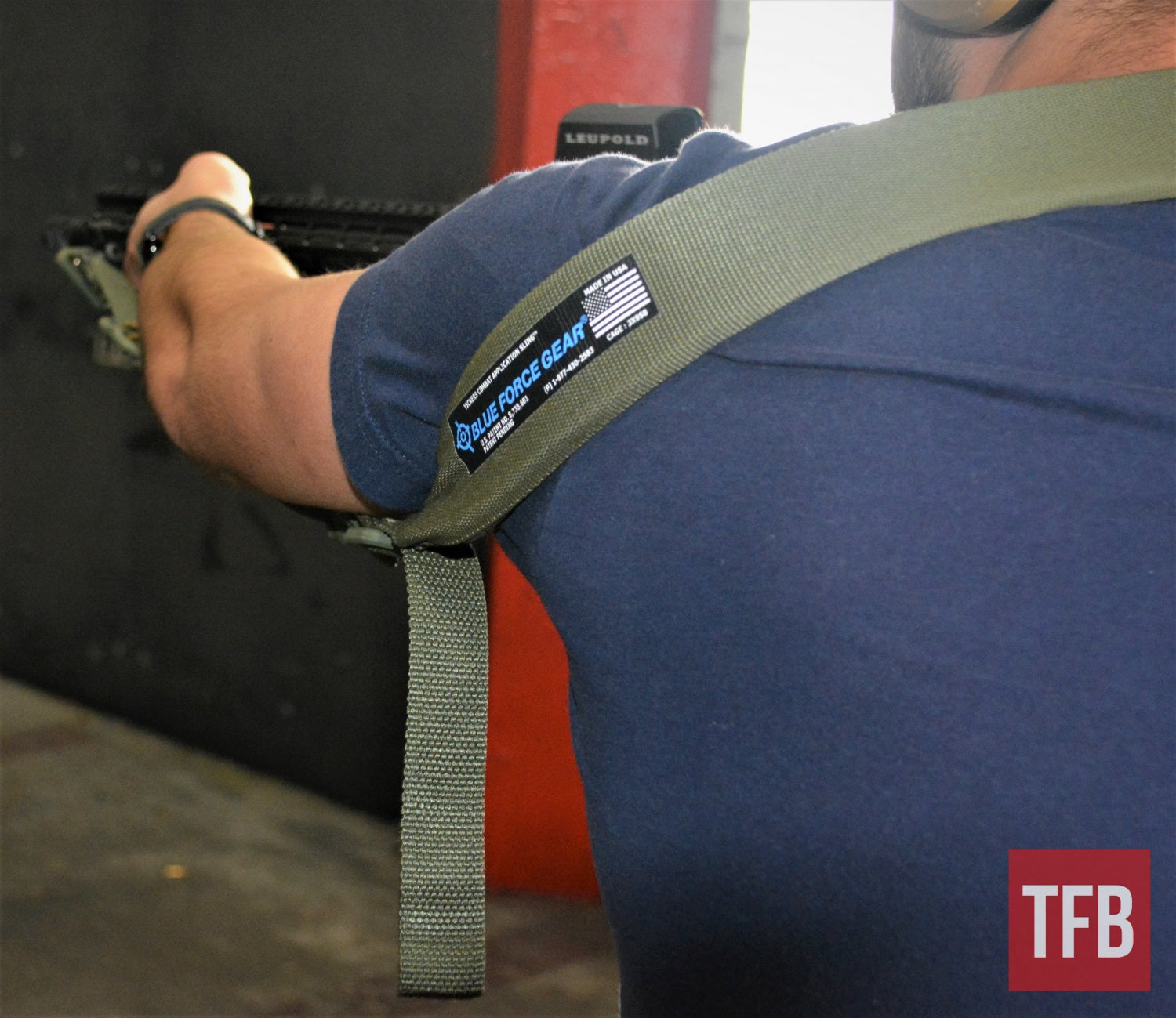
When is a sling more than a sling? When you understand how it can be leveraged as more than just a sort of holster for your long gun.
If you’re suspicious, I can’t blame you. Until only recently, I would’ve been, too. For many years, between hunting, casual sport shooting, military service, and more, I’d used and thought of slings in much the same way as most do: merely as a way to keep a long gun connected to me when I wasn’t gripping the weapon, nothing more. I considered slings for long guns much the same as holsters for handguns; they just needed to provide containment and retention. However, at TFB and TFBTV’s recent GunFest, an enlightening class from Blue Force Gear brought me back to some fundamentals and showed the elementary sling in a new light. By the end of our condensed course, I was actually seeing tangible, measurable performance improvements by virtue of nothing more than the skillfully guided optimization of an unassuming 1-inch wide strip of fabric.

Chris Sizelove (right), Blue Force Gear’s Director of Training, brought a wealth of expertise to share with us in this class at GunFest 2021.
How was this possible? Like all quality training, it starts with a quality trainer. Enter the Director of Training for Blue Force Gear, Chris Sizelove. A retired US Army Master Sergeant, Sizelove spent sixteen of his twenty years in the military as a member of the vaunted 75th Ranger Regiment, an elite Special Operations unit. During his time as a scrolled Army Ranger, he amassed an impressive resume that spans thirteen combat deployments and overseas tours, as well as specialty assignments which make him particularly suited to his current instructor role. Sizelove served as a subject matter expert and trainer for carbine, pistol, CQB, and forced entry, as well as joint operations in general as an assaulter and strike force senior NCO. He was also a sniper, serving in a dedicated Sniper/Reconnaissance element, and spent time as a Regimental Master Breacher. Since retiring from the Army, he’s also taken a parallel role with Forge Tactical, and is a fellow Director with Forge’s other two training powerhouses, John “Chappy” Chapman and John Spears. Suffice it to say, the relevant experience is first-class – and it shows.
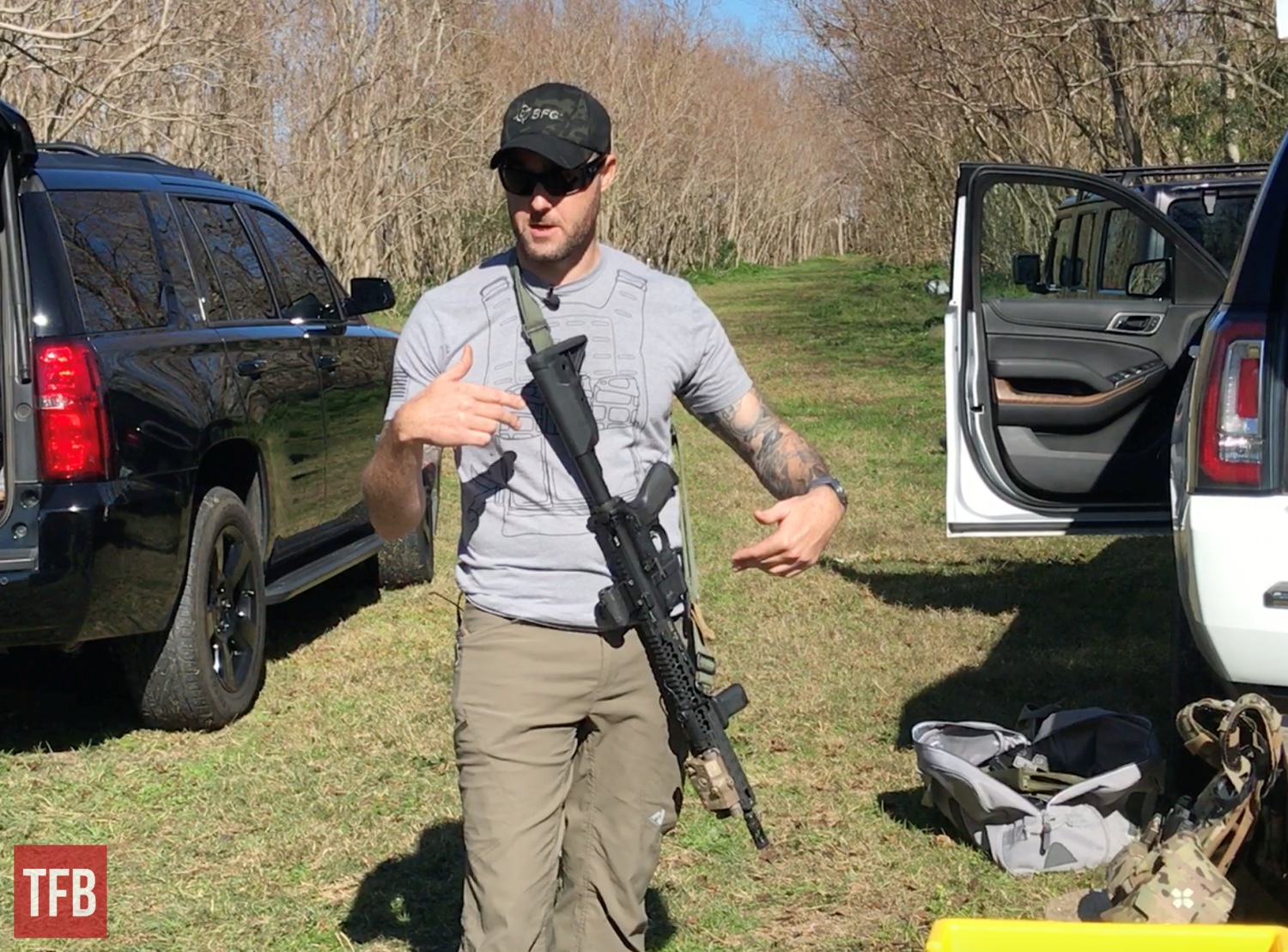
Sizelove explaining the details behind the dos and don’ts of good sling setup and management.
Blue Force Gear joined us at GunFest for two purposes. First, to talk about a few new products, like their line of med pouches and their first-ever tailed sling, the new G.M.T. model. The G.M.T. works and is constructed mostly the same as BFG’s previous models, with the key difference being an extended tail where the standard Vickers versions have a short “quick-adjuster” pull tab, plus a knob-style pull to loosen it back up. This swage ball was chosen to provide solid grip purchase, as well as an obviously different tactile feel from the tightening mechanism. That way, even if you’re grasping out of sight or in the dark, there should be no confusion about which end you’ve grabbed. Other than presenting this new product, the second purpose for Blue Force Gear‘s visit was for Sizelove to give his sling class to the TFB and TFBTV staff who were there. I was fortunate enough to be one of these writers-turned-students, and was asked to share my experience from the compressed half-day mini-session. No doubt many of you think of slings like I used to, and hopefully, this article gives you a glimpse of the sling-as-more-than-just-a-rifle-holster concept, if you haven’t been exposed to it before. Sizelove distills his conception of the sling’s full capabilities into three basic points of optimization.
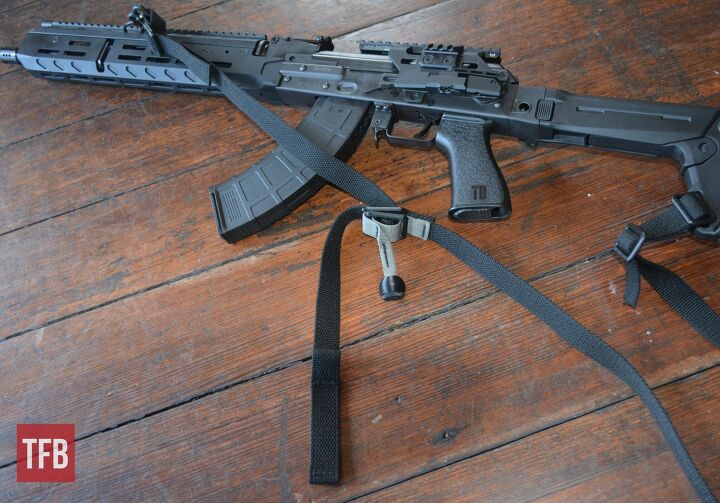
Some customers have been asking Blue Force Gear for a tailed sling for years, and now the G.M.T. model shown here fulfills that request.
Three Points of Rifle Sling Optimization:
The first point of optimization better cultivates the basic principle of the sling: keeping your weapon retained to your body. The key is in the way this task is achieved. Plenty of us start out letting a rifle do little better than dangle across our torso with the buttstock in the general direction of our strong-side shoulder. This commonly leaves your muzzle flopping around haphazardly off of your weak-side hip or thigh, or swinging over your feet. At best, this positioning can frequently get in the way of your mobility and cause annoyances with your gun banging around into you as you move around. At worst, it could prove dangerous; it’s not impossible for an AR’s selector switch to accidentally get bumped off of safe as it brushes over kit, clothing, etc. Similarly, it’s not impossible for a foreign object to accidentally slip into the trigger guard and cause a negligent discharge. Nobody wants to get surprised with a self-inflicted gunshot wound to the foot or leg, and while such accidental manipulations are rare, they can happen – and they have happened before. So not only does your front sling position need to keep your gat piece on you, it needs to do so in a controlled and consistent manner. Good sling sizing, setup, and handling can provide you these benefits. Done properly, this enables you to be certain of exactly where your rifle is resting when your hands are off of it – that it’s positioned well, not banging around uncomfortably/unsafely.
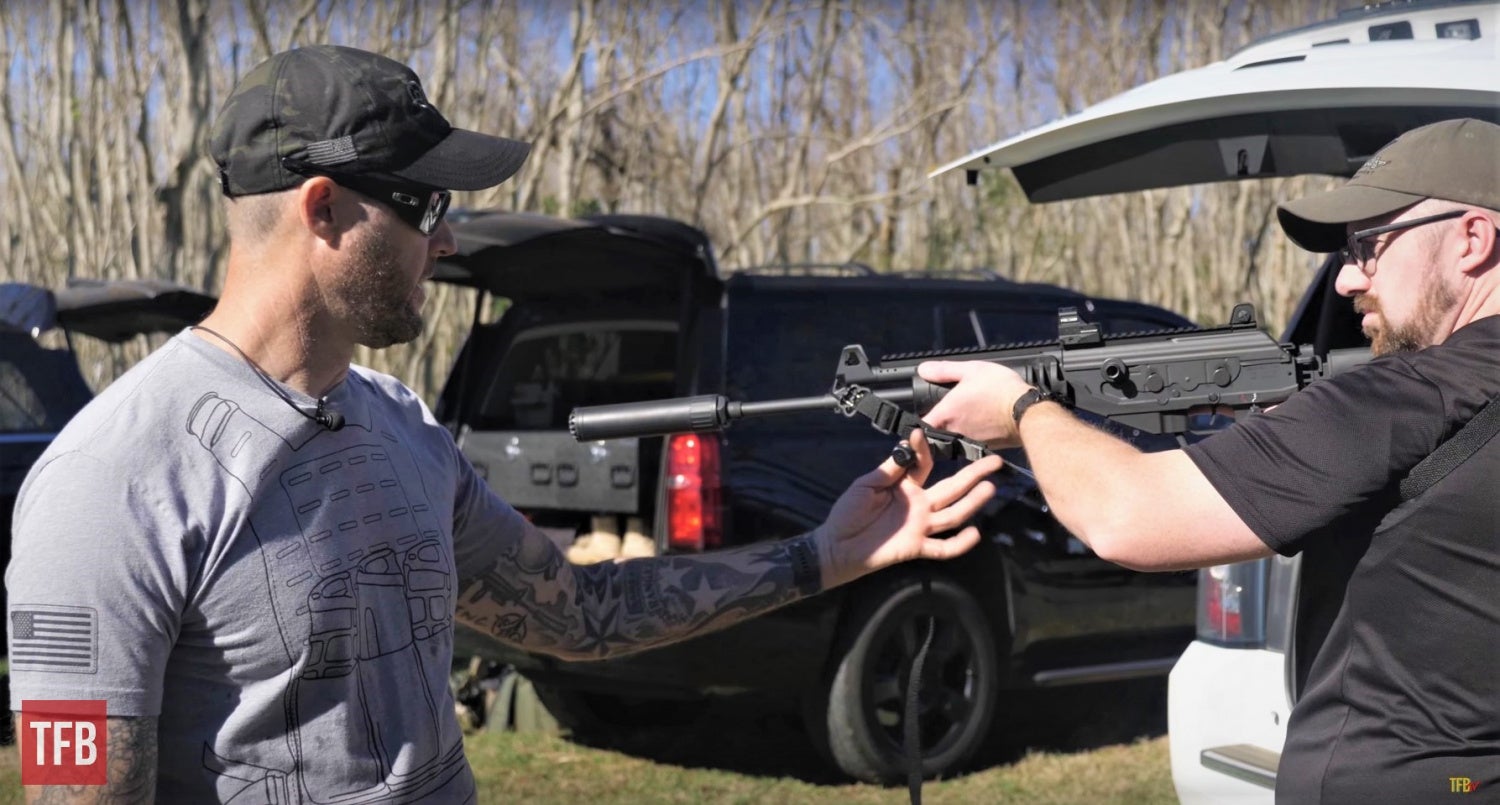
The G.M.T. sling features a swage ball loosening pull to clearly differentiate from the flat-tailed tightening mechanism.
Sizelove’s second point of sling optimization comprises the meat of this block of instruction, where added shooting functionality comes into play. My old habits saw my sling hanging somewhat loosely when my rifle was shouldered, just casually draped over my shoulder with slack in it. After all, if its job was nothing more than weapon retention when my hands were off the gun, it didn’t really have much of a job to do when my hands were full of firearm, right? Wrong. When I did that, I was (as Chris loves to frequently quip) “leaving money on the table” without realizing it. That “money” can pay out in the form of enhanced stabilization. As we generally know, some of the fundamental facets at hand in shooting both accurately and quickly involve stabilization. That is to say, the fewer moments we have to spend trying to control wobble and get our sights on target, the faster we can reach that critical moment in which we make the gun go “bang”. Concurrent with this time factor is the three-dimensional space factor. The less severe our wobble, the more certain and more accurate we can typically be. These ideas are not news to any experienced shooter. They’re why tools like bipods and hog saddles exist, why breath control can matter, why shooting from a standing freehand position is generally less optimal than being able to brace on a barricade or go prone. And all of these principles become amplified when applied to follow-up shots, considering the augmenting forces inherent in recoil management.
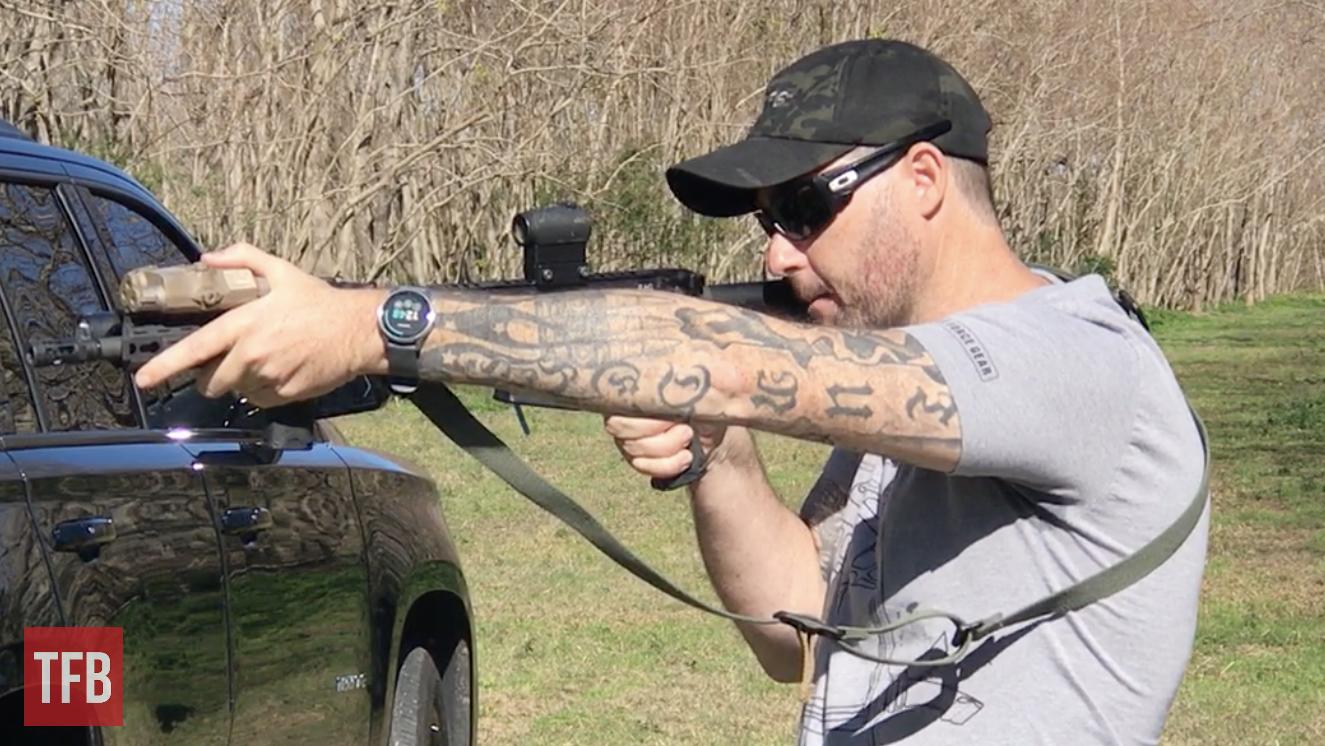
It’s amazing how much of a difference can be made by intelligently going from a loose sling like this…
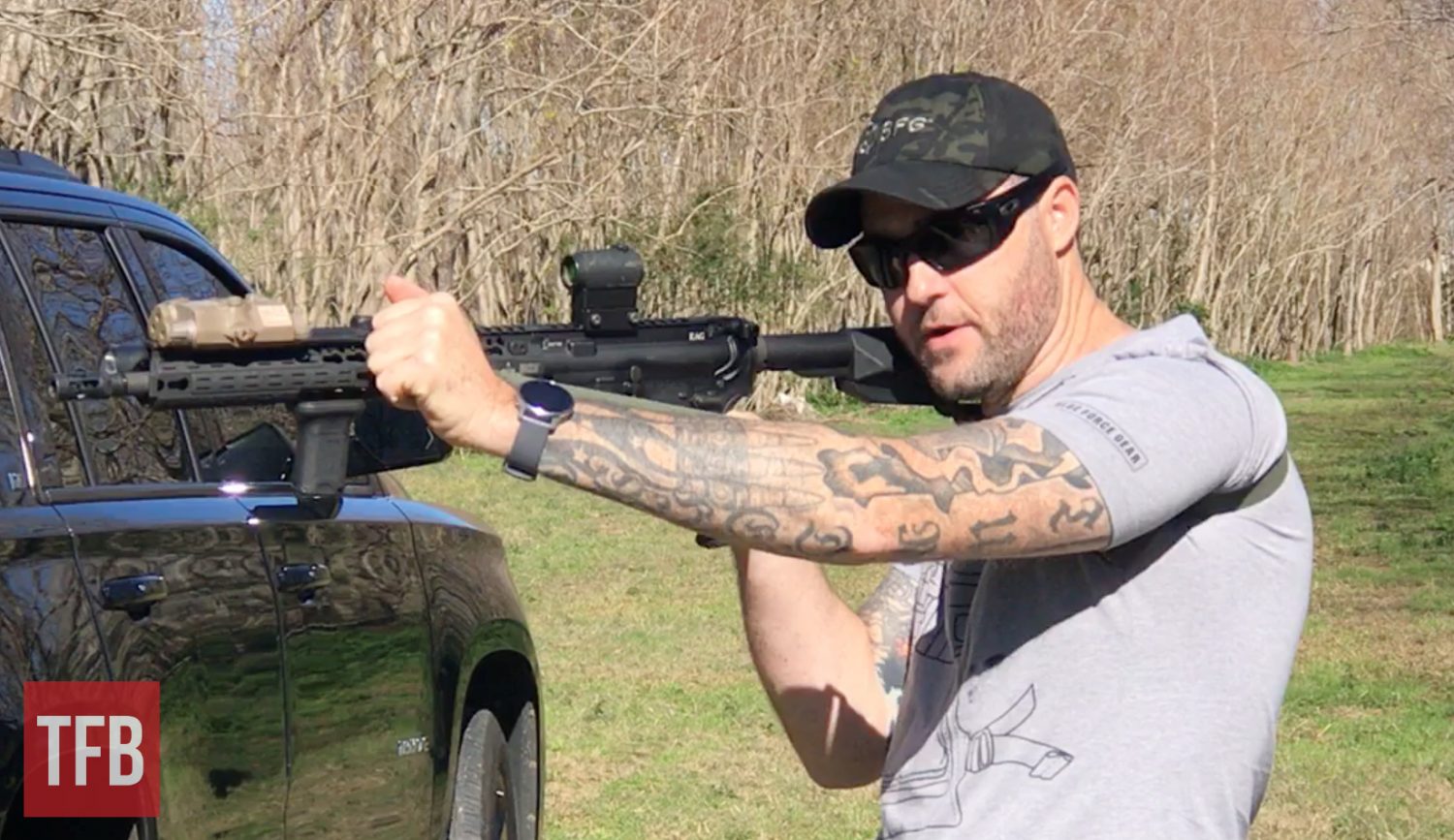
… to a properly taut and sized sling like this, in terms of shooting stability and control.
Much of what we do in attempting to increase our stability centers around points of contact. Again, we all understand this, but it bears rehashing because achieving mastery in virtually anything depends upon mastering the fundamentals. It doesn’t take much shooting experience to garner a fundamental-level understanding that more points of contact on the rifle = less wobble, and thus more stability/accuracy. If you’ve ever fired an AR with only one point of contact (i.e. held out away from your body with only your strong hand on the pistol grip), it’s immediately obvious that this is far less stable than the normal four points of contact you get when shouldering a rifle. Your non-firing hand on the foregrip, the buttstock tucked into your shoulder pocket, and your cheek weld up against the stock all serve to help hold the rifle more in place, where you want it. Tons of shooters don’t realize that a properly sized and adjusted sling can actually serve as the fifth point of contact. My old sling setup, hanging slack when I got on the gun, wasn’t doing anything for me. In Sizelove’s class, he helped each of us configure and size our slings to our particular rifles and bodies. With this accomplished, I was able to snug up the sling around me in firing position. With my sling properly set up, positioned, and pulled taut as per Sizelove’s expertly demonstrated techniques, I was able to increase my hit percentages while also shaving off time. The feel of better control, combined with my rapidly improved measurable results, provided an epiphanic experience.
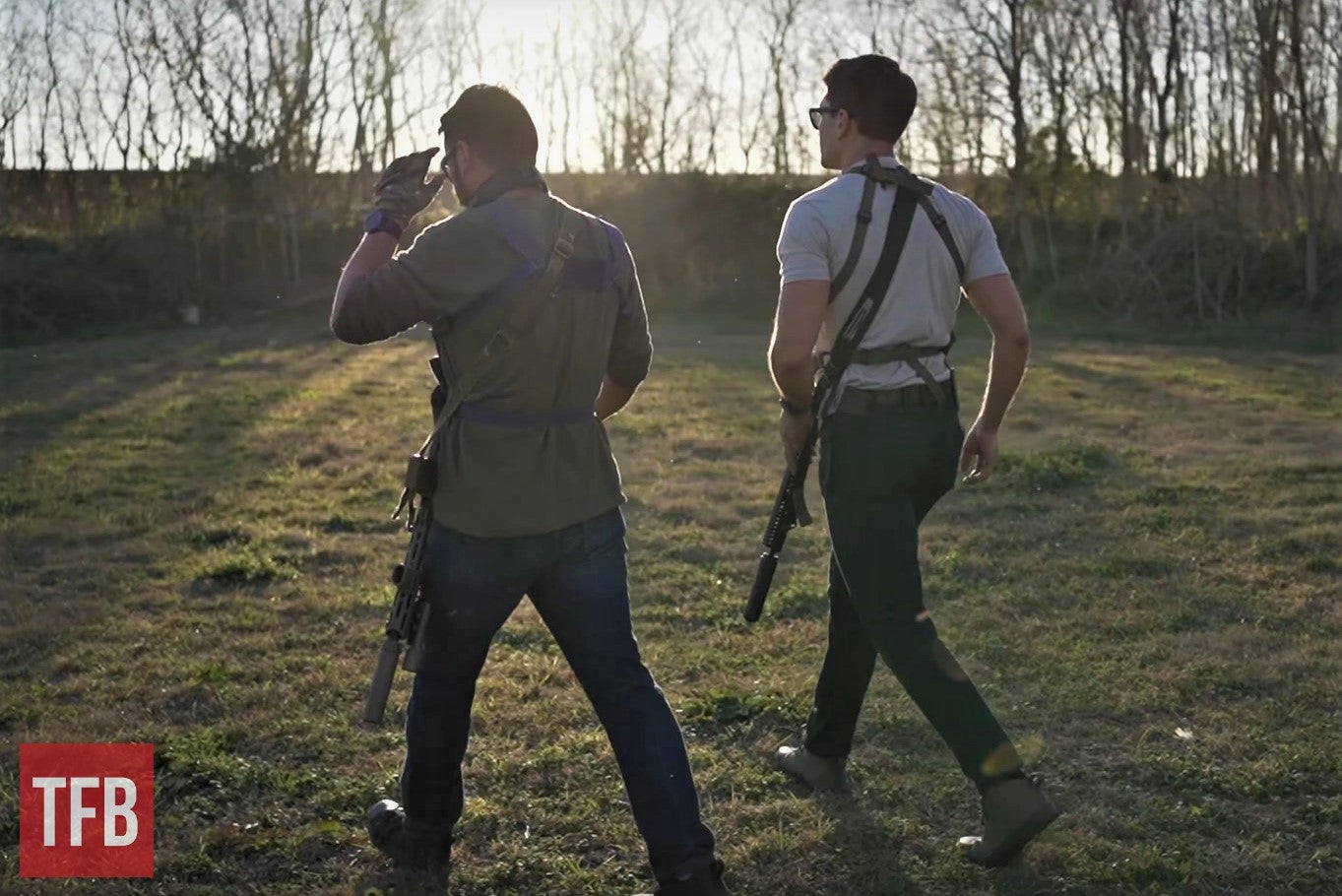
TFB’s Luke C. and TFBTV’s James Reeves have their rifles securely slung in a good front/admin position, keeping them safe and out of the way as they move to the firing line.
The third and final point of optimization echoes the first, in its pointed adherence to absolute firearms safety. Just as the Four Rules should always be heeded when everything goes right, those same safety tenets cannot get thrown out the window if things go wrong. “At all times” really does mean ALL times, even in case of emergency. An optimized sling should have at least one, and preferably two, quick-detach features at the front and/or rear. These can be a function of the attachment hardware, like common QD buttons, or built into the sling itself, like some two-piece sling models that are constructed with Fastex buckles connecting two sections of fabric together. This quick-detach capability can become critical in case of a casualty or other injury. Without QD capacity, you could find yourself trying to wrestle a rifle off of an unconscious (or even awake but uncooperative/combative) shooting buddy who’s experiencing a medical issue. Jostling a patient can be harmful, and a flailing firearm is virtually guaranteed to be dangerous. If the gun’s sling has secure QD hardware that can efficiently and safely be popped free, this can enable you to avoid both problems in the midst of a mishap.

Note how James’ sling is snugged up close to him even in the prone, providing good tension that serves to decrease his “wobble zone”.
While theirs are not the only products on the market that can enable you to achieve the same kind of optimization we were able to achieve in this class, Blue Force Gear’s slings – particularly the tried-and-true Vickers design and its variants – are considered by many to be the gold standard. After experiencing these refinements firsthand, under the tutelage of a true subject matter expert, I can absolutely see why. The opportunity to see near-instantaneous benefit from top-tier instruction is a rare gem in the shooting disciplines, and I am exceedingly grateful to Blue Force Gear and MSG(R) Sizelove, as well as my TFB/TFBTV colleagues, for sharing this outstanding experience with me.
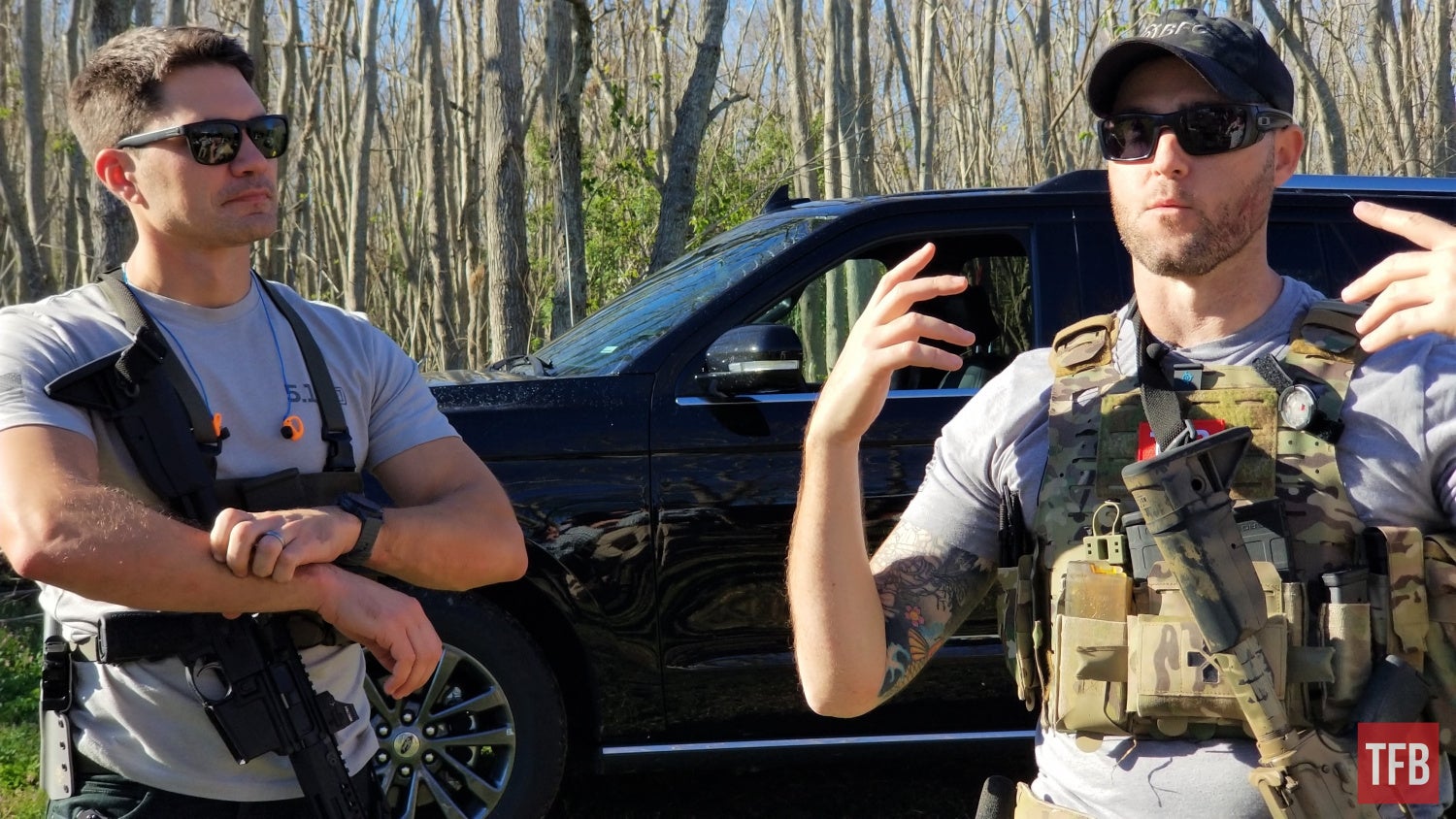
“James, why are you like this?” … okay, that may not be what Chris was actually saying here – but it would be understandable!
If you, as a TFB reader and fellow shooter, haven’t taken a closer look at your sling choices and setups lately (like I hadn’t before this class), I highly recommend it. As I can now attest, once you understand the particular hows and whys, it doesn’t require a great deal of time or cash to optimize a component of your gear that is easy to overlook if you aren’t purposeful about it. As Chris would say, don’t leave money on the table! After all, is there a shooter among us who wouldn’t love the chance to quickly and conveniently shoot more quickly and accurately? With good sling optimization, it’s too easy! Happy slinging, and I’ll see you at the range.
Photos courtesy of Blue Force Gear, the author, and/or other TFB/TFBTV staff.
We are committed to finding, researching, and recommending the best products. We earn commissions from purchases you make using the retail links in our product reviews. Learn more about how this works.
 Your Privacy Choices
Your Privacy Choices
